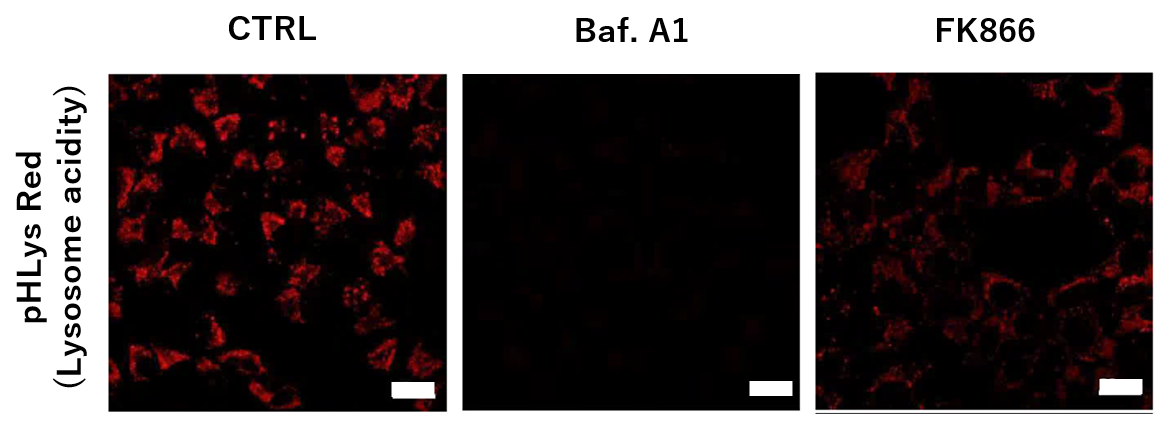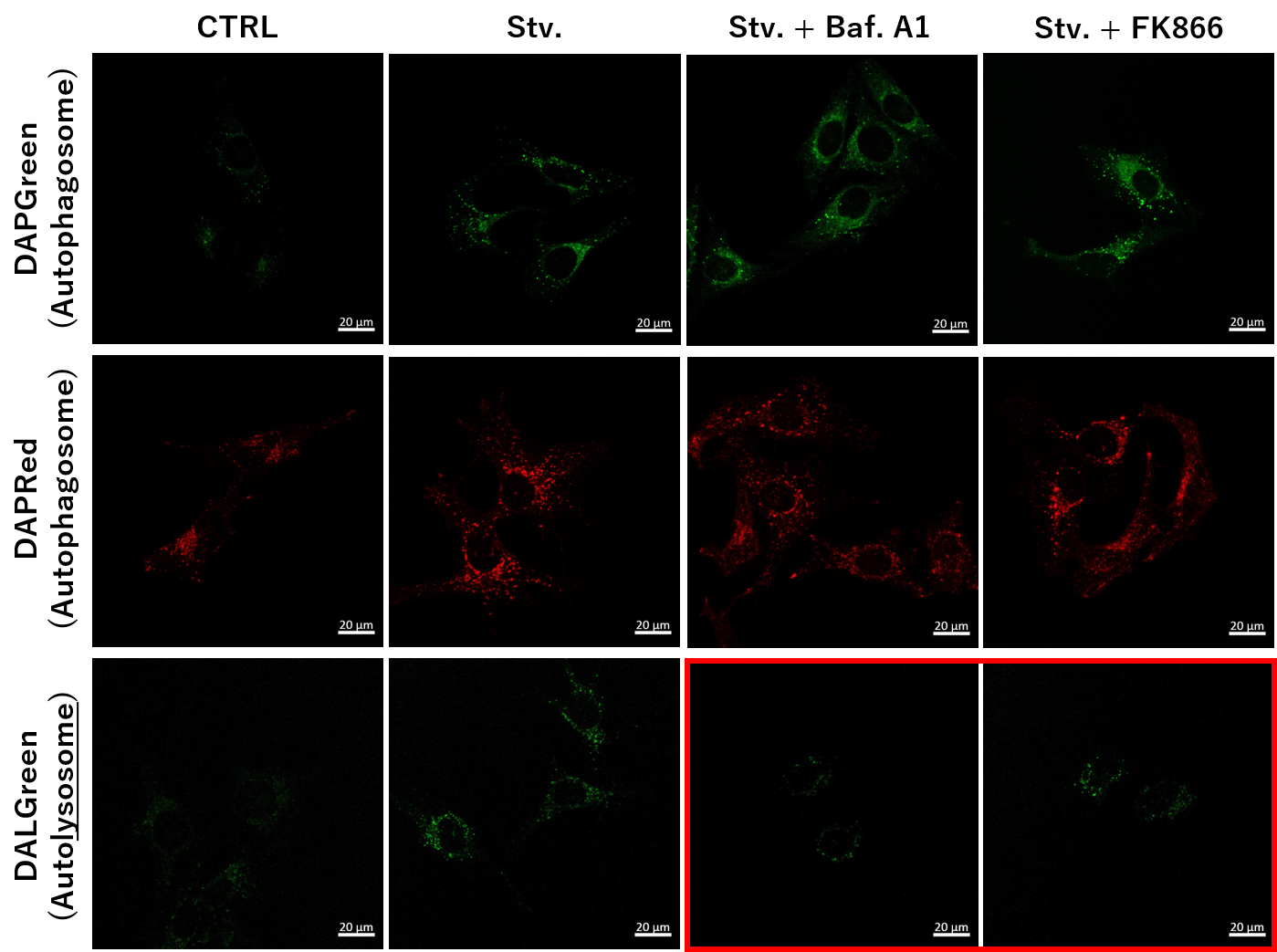|
Scientists have revealed that Scd1, which is induced by exposure to cool temperatures, and monounsaturated lipids are crucial for the survival of adipocytes. Inhibition of Scd1 leads to autophagy and cell death, while supplementation with monounsaturated fatty acids can prevent this.
|
|
Scd1 and monounsaturated lipids are required for autophagy and survival of adipocytes
Click here for the original article: Hiroyuki Mori, et. al., Molecular Metabolism, 2024.
Point of Interest
- Inhibition of Scd1 results in autophagy-dependent cell death.
- Blockade of autophagy or supplementation with monounsaturated fatty acids rescues Scd1-deficient adipocytes from death.
- Reduced bone marrow adipocyte volume and number in mice deficient for Scd1 specifically in bone marrow adipocytes.
- Scd1 deficiency causes cell death characterized by the accumulation of autophagosomes due to lysosomal dysfunction.
|
|
Related Techniques
|
- First-time autophagy research
- Autophagic Flux Assay Kit
|
- Autophagy detection dyes for imaging
- DAPRed (Autophagosome detection), DALGreen (Autolysosome detection)
|
- Autophagy detection dyes for Flow cytometry and plate reader
- DAPGreen (Autophagosome detection)
|
- Mitophagy detection dye
- Mitophagy Detection Kit and Mtphagy Dye
|
- Lysosomal pH and mass detection
- Lysosomal Acidic pH Detection Kit-Green/Red and Green/Deep Red
|
- Lipid droplets detection
- Lipi-Blue / Green / Red / Deep Red
|
- Glycolysis/Oxidative phosphorylation Assay
- Glycolysis/OXPHOS Assay Kit
|
|
Related Applications
|
Tracing autophagosome to autolysosome in live cells
Nampt inhibitor, FK866 inhibits the progress of autophagosome to autolysosome by lysosomal deacidification. A recent finding shows that the dysfunctional condition of nicotinamide adenine dinucleotide (NAD+) biosynthetic enzyme, Nampt induces lysosomal deacidification1). In this section, we tried to determine how NAD+ depletion-induced lysosomal deacidification affects the autophagy-lysosomal pathway. 1) Mikako Yagi, et. al., EMBO J., 40(8), e105268 (2021)
-
<Impact on Lysosomal Acidification and pH Detection>

-
To confirm the effect of the Nampt inhibitor, FK866, on lysosomal acidification, HeLa cells were first labeled by the lysosomal pH detection dye pHLys Red. The cells were then treated with FK866, and lysosomal acidification inhibitor Bafilomycin A1 was used as a positive control. FK866 and Bafilomycin A1-treatment each decreased the fluorescent pHLys Red signal, indicating lysosome neutralization.
(Protocol)
HeLa cells (8 well ibidi) (MEM, FBS+)
↓
Wash x2 (HBSS)
↓
. pHLys Red working solution (HBSS, 1,000 times dilution)
. pHLys Red working solution (HBSS, 1,000 times dilution) + 50 nM Bafilomycin
A1
. pHLys Red working solution (HBSS, 1,000 times dilution) + 10 nM FK866
↓
30 min, 37°C
↓
Observed by confocal microscopy (x20)
|
-
<NAD+ Depletion and Autophagy-Lysosomal Pathway Response>

-
We next determined how FK866-induced lysosomal deacidification affects the autophagy-lysosomal pathway. After staining with DAPGreen/DAPRed (for detecting autophagosome), or DALGreen (for detecting autolysosome), HeLa cells were starved in HBSS incubation and then treated with FK866 or Bafilomycin A1. Under the starvation condition, the fluorescent signals from all dyes increased, indicating the proceeding autophagy-lysosomal pathway. On the other hand, only DALGreen's signals were decreased in FK866 and Bafilomycin A1 treated cells with starvation conditions. These results clearly suggested that FK866 inhibits the autophagy-lysosomal pathway by NAD+ depletion-induced lysosomal deacidification.
(Protocol)
HeLa cells (8 well ibidi) (MEM, FBS+)
↓
Single-stain with 2 umol/I DALGreen or
0.2 umol/I DAPGreen or
0.2 umol/I DAPRed
30 min, 37℃
↓
Wash x2 (MEM, FBS+)
↓
. Control (MEM, FBS+) for 2 h 20 min
· Starvation (HBSS) for 2 h 20 min
· Stv.2 h = 10 nM Bafilomycin A1 (HBSS) for 20 min
· Stv.2 h = 10 nM FK866 (HBSS) for 20 min
↓
Observed by confocal microscopy (x40)
|

















